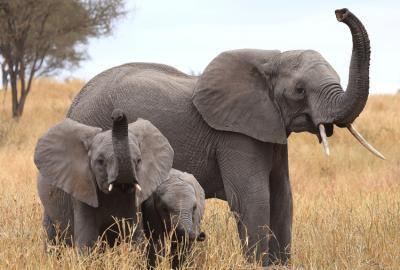July 22, 2014 – Sense of smell is critical for survival in many mammals. The ability to distinguish different odors, which is important for sniffing out food, avoiding predators, and finding mates, depends on the number and type olfactory receptors found in an organism's genome. In a study published today in Genome Research, researchers examined the olfactory receptor (OR) repertoire encoded in 13 mammalian species and found that African elephants have the largest number of OR genes ever characterized; more than twice that found in dogs, and five times more than in humans.
To characterize the olfactory capabilities of different mammals, the authors examined genome sequences from 13 placental mammals and identified over 10,000 OR genes in total. The repertoire of OR genes found in any given species was highly unique – only 3 OR genes were shared and evolutionarily conserved amongst all 13 mammals. Surprisingly, the African elephant had the most extensive olfactory repertoire, with almost 2,000 OR genes. "The functions of these genes are not well known, but they are likely important for the living environment of African elephants," said author Yoshihito Niimura. "Apparently, an elephant's nose is not only long but also superior." Conversely, humans, along with our primate relatives, have much fewer numbers of OR genes compared to all other species examined, possibly as a result of our diminished reliance on smell as our visual acuity improved.
The authors traced the evolutionary histories of OR genes using a novel computational tool to deduce ancestral genes, and then examined their duplication or loss in each species. Some lineages of OR genes greatly expanded in a given species, such as an ancestral gene that has duplicated in elephants, generating 84 distinct genes (humans and other primates only have 1 copy), while other OR gene lineages are completely lost. Each species' unique olfactory repertoire, resulting from hundreds of gene duplications and deletions during evolution, highlights the molecular basis for differences in olfaction across organisms.

They have five times more olfactory receptors than humans, and the most of any animal characterized to date.
(Photo Credit: Photo courtesy of Eric Green.)
"Comparison of the repertoires of OR genes among mammals lets us know the commonalities and differences of olfactory perception, deepening our understanding of the sense of smell in humans," Niimura said.
Source: Cold Spring Harbor Laboratory